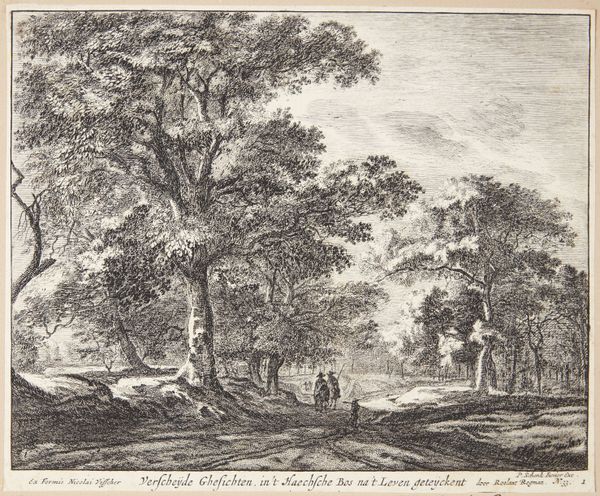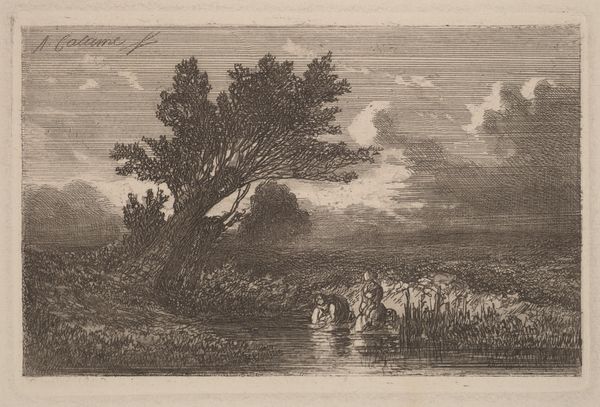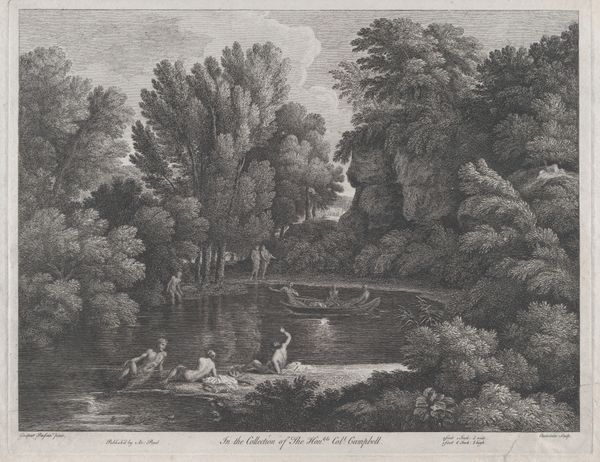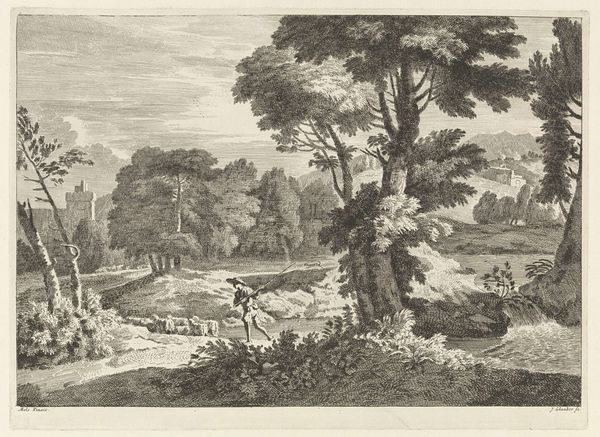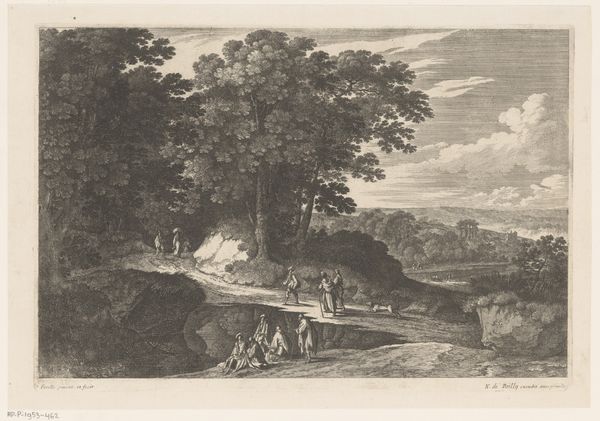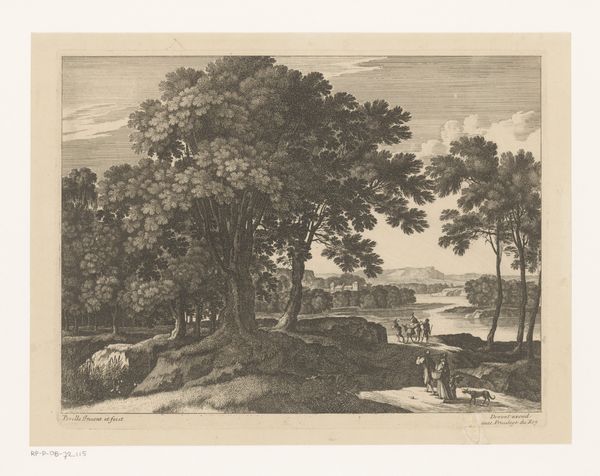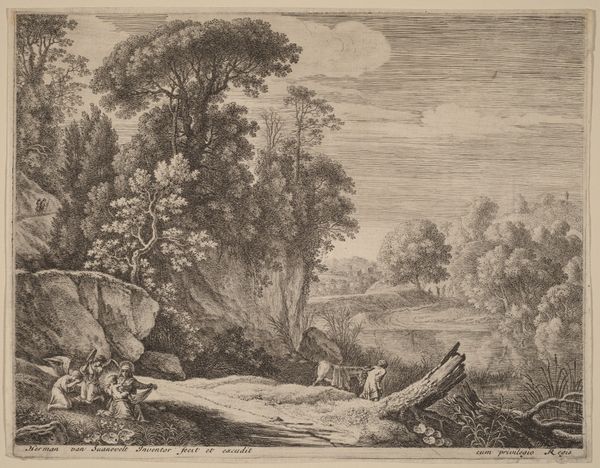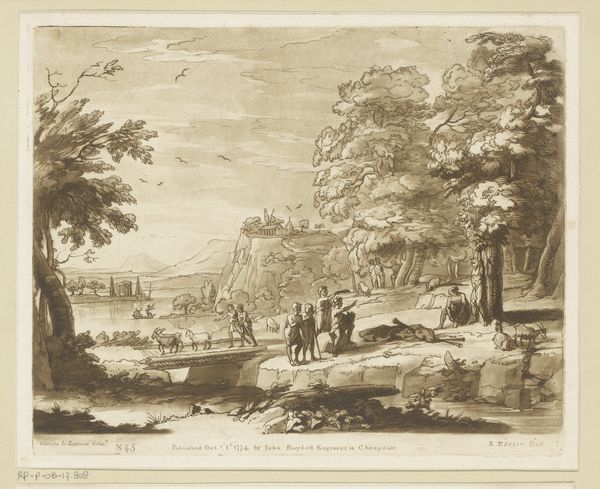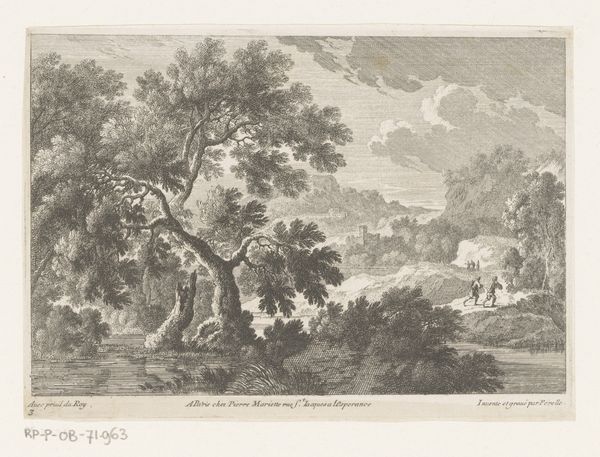
drawing, print, etching, engraving
#
tree
#
drawing
#
baroque
# print
#
etching
#
landscape
#
figuration
#
line
#
northern-renaissance
#
engraving
#
realism
Dimensions: image: 8 7/16 x 12 3/8 in. (21.5 x 31.5 cm)
Copyright: Public Domain
Curator: Here we have "La Paysanne en Marche," or "The Walking Peasant Woman," a print made sometime between 1605 and 1650. It is attributed to Jean Morin. The work is made with engraving and etching. Editor: It strikes me as a landscape dominated by rich, dark foliage, yet also featuring these tiny figures – almost swallowed by their environment, wouldn't you say? The woman indeed seems weary, burdened by the walk, and the child. Curator: Landscape prints became increasingly popular during this era. Artists responded to a growing urban audience that was nostalgic for rural life, although from a clearly bourgeois, distant point of view. Editor: Precisely. I see that tension. On one hand, we have an idealized vista –nature presented as abundant and even calming. But within it, the figures tell another story of labor and perhaps even poverty? Curator: Yes, consider how Morin uses line to render the details. He meticulously depicts the density of the woods but also conveys the rough texture of the road. This print shows an interesting development in printmaking with combining etching and engraving which allows for fine details in line work and tonal variations. Editor: And I’m drawn to the scale. Or rather, the relative lack of it. The landscape is monumental, almost indifferent to these human figures making their way across it. What could the size of landscape compared to people reveal about how they were regarded? Curator: Perhaps how inconsequential rural lives appeared to those commissioning and viewing such prints. Land was valued for its yield, nature was something to be observed rather than integrated into life. These prints also made it easy for people far from rural areas to get art in their homes. Editor: So, in a way, these idyllic images perhaps served a more complicated function, reassuring those with power and privilege of a certain order, even as they aesthetically framed a stark social reality. Curator: It’s definitely a lens to consider when viewing prints like "La Paysanne en Marche." Looking at art in the public sphere allows a perspective into popular societal beliefs, especially among wealthy society. Editor: Absolutely. Thank you. It leaves me contemplating how perceptions of landscape and labor continue to be shaped, even today, by economic and social disparities.
Comments
No comments
Be the first to comment and join the conversation on the ultimate creative platform.
